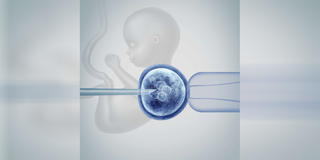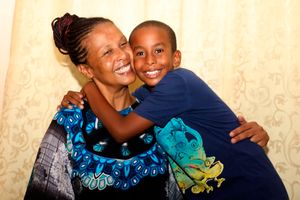Fertility problems: Diagnosis and treatment options

In-vitro fertilisation helps women to conceive.
What you need to know:
- A majority of couples may require assisted reproductive treatment such as in vitro fertilisation. This is usually a major decision for a couple to make as it involves financial commitment as well as uncertainty about success and risks that come with it.
- Other options are use of donor gametes or alternation parenthood options such as adoption, foster parenthood or use of surrogacy arrangements. Legal opinion may need to be sought in some circumstances.
In many cultures, having children is seen as fulfilment of a social contract, and the obligation of a couple is to meet this expectation. No definition for how long the wait should be is socially enacted.
Couples will often make the assumption that insofar as they are sexually intimate, fertility is guaranteed except where a conscious decision to use contraception is made. However, there are instances where couples may experience challenges with conception. Here is what every couple planning to conceive needs to know.
What determines a couple’s fertility?
Fertility is dependent on these important parameters — regular ovulation with patent (open) fallopian tubes in the female partner and normal sperm parameters in the male partner, and regular intercourse to allow the egg and sperm to meet and fertilise. What is often not understood is the chance of conception in one fertile ovulatory cycle, medically known as fecundity. This is the probability that a female partner will conceive in every month of being fertile when they try to. Generally, fecundity stands at about five per cent, that is; for every 100 fertile females, only about five will conceive during each month of trying. It therefore implies that couples ought to consistently attempt for conception to be successful.
How often should a couple attempt conception?
Most couples will get pregnant within a year if they have regular sex and don’t use contraception. Often, there is a tendency that to enhance conception, the attempt is made at specific times of the month, typically around ovulation. This is, however, an erroneous assumption because the outward signs of ovulation become apparent after the egg has been released. The female egg has a short lifespan, typically about 24 hours, and it quickly becomes dehydrated and desiccates. Nature devised an adaptation around this and made the sperm cell to be able to remain viable for several days in the female genital tract. In essence, couples are advised that trying for two to three times a week gives them the highest chance of conception.
At what point should one be worried about conception?
A couple should be concerned if is taking longer than one year without conceiving (or six months if the female partner is over 35 years old). Attending a medical consultation together provides the opportunity to dispel myths around fertility, remove blame and enhance engagement.
What exactly does the doctor examine to diagnose fertility challenges?
A comprehensive assessment includes examination of a semen sample to check for correct sperm parameters, testing ovulation and lastly checking the patency of fallopian tubes. Overall, half of fertility issues may be related to sperm and the other half to female factors including ovulation and tubal blockage. The medical approach therefore would be to start investigation by the least invasive tests, that is semen analysis and ovulation tests. This means that if the sperm parameters are normal, then assessing whether the fallopian tubes are open is the next logical step as this helps to determine whether a chance of natural conception exists.
What treatment options are available?
Going through fertility assessment may be a roller-coaster experience. Whereas knowing the factors contributing to subfertility is important, particular diagnoses can be devastating such as blocked fallopian tubes, severe sperm abnormalities and ovarian failure. Couples may feel frustrated, angry and even want to blame certain situations in their own life experiences. The relationship may also strain. This is the moment where the healthcare team should be supportive and also engage counselling services.
Options for fertility treatment should be discussed sensitively, paying attention to a couple’s circumstances and offering information based on current best evidence. A majority of couples may require assisted reproductive treatment such as in vitro fertilisation. This is usually a major decision for a couple to make as it involves financial commitment as well as uncertainty about success and risks that come with it. It is important that a couple have factual and up-to-date information. It helps a great deal when both partners attend clinic for these discussions. Other options are use of donor gametes or alternation parenthood options such as adoption, foster parenthood or use of surrogacy arrangements. Legal opinion may need to be sought in some circumstances.
Dr Muteshi is a consultant fertility expert at Aga Khan University Hospital, Nairobi




